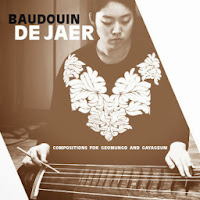I spent some quality time with my piano recently, and paged through what used to constitute my "repertoire." I was no pianist, but my college major required that I attain some degree of proficiency and play a jury for the piano faculty every semester. It was nerve-wracking, but not as much as singing in front of the voice faculty! Anyway, I got to where I could play (slowly) the super-easiest pieces by real composers such as Bach, Beethoven, Chopin, Mendelssohn, MacDowell, and Schumann.
Schumann's Kinderszenen (Scenes from Childhood), Op. 15, is a set of thirteen short pieces that Schumann wrote in 1838 when he was separated from his true love, Clara Wieck. Clara's father was Schumann's teacher, and Wieck did not approve of this romance because Clara was so much younger than Robert, and Robert was a penniless student. Wieck had taken Clara on tour as she was a rock star pianist of the day. During her absence Robert wrote some of his greatest piano music, which he intended, and she understood, as his love letters for her. Here's Vladimir Horowitz playing Kinderszenen.
I only played the beginning part which may sound familiar since it is used often in movies and television to telegraph a simple, carefree ambiance. The name of this short movement is Von fremden Ländern und Menschen ("From Foreign Lands and Peoples"). If you let the video play, you'll also hear Träumerei ("Dreaming"), which is one of Schumann's most famous pieces.
So Robert Schumann married Clara Wieck even though her father did not approve. (Clara's parents had divorced and back then children went to live with their father. Her mother was not consulted on this match.) Schumann had already alienated his own mother by choosing a career in music over a career in law. Robert and Clara were happy, for a while, and had a family. Clara was the better pianist, so Robert left the concertizing to her while he composed.
A sad thing happened to Robert which set off a tragic chain of events. He began to have trouble with a finger on his left hand. He tried everything to remedy it, from animal baths (sticking his hand in a recently dead animal) to electroshock to a chiroplast contraption that he designed himself:
 |
Ostwald,
Peter F. “Florestan,
Eusebius, Clara, and Schumann’s Right Hand.” 19th Century Music IV
(no.1): pp.17-31.
|
That's a sad story, but one must remember Robert Schumann as a musical leader of the Nineteenth Century Romantic Era in Europe. He not only wrote music, he wrote influential words about music. Carnaval, Op. 9, is another of his enduring early works. While writing this piece, he was distracted by a crush on another of Wieck's students (Clara was too young to think about romantically then), and used the letters of her hometown (ASCH) translated into German names for musical pitches. He also represented two parts of his own personality with the characters Florestan and Eusebius. The crush is represented by the character Estrella, and teenage Clara was there as Chiarina. Other acquaintances appear, too, and they all have imaginative adventures which Schumann wrote about. No composer had ever created such an imaginative world around a piece of non-staged piano music before.
Later in his life, Schumann left the piano to compose for other instruments, orchestra, and voice. His song cycle, Dichterliebe, ("The Poet's Love") Op. 48 (1840), is another work that endures in the concert repertoire. I'll leave you with Fritz Wunderliche singing this cycle, based on the words of Heinrich Heine. Notice that even though these are songs, the piano has a very important part--more than mere accompaniment. That's Romantic with a capital 'R'! (Meaning the era, not hearts and flowers.)

























